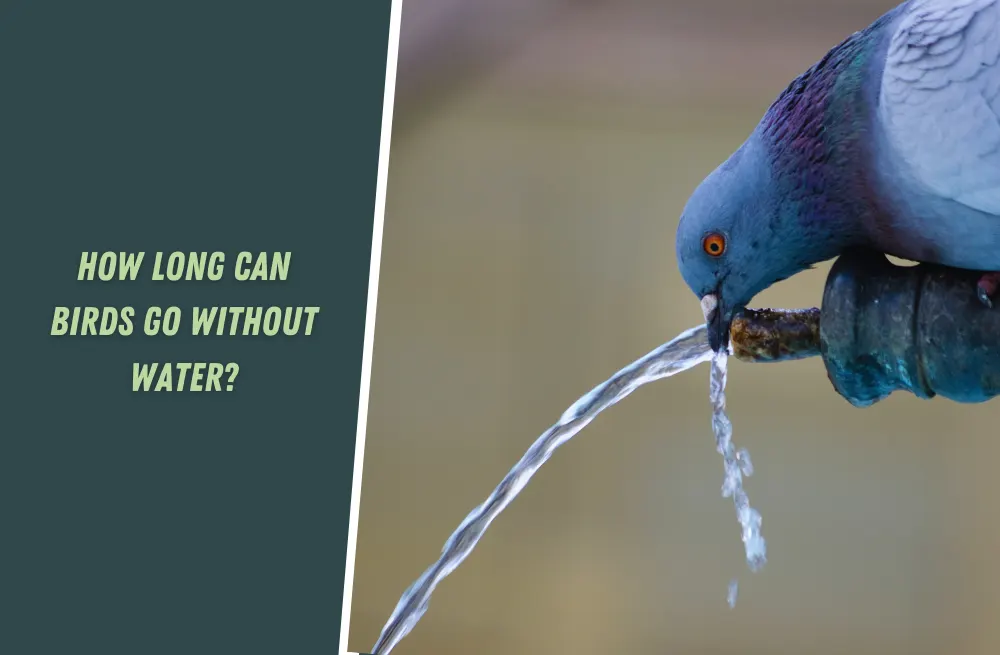The American marten, scientifically known as Martes americana, is a captivating carnivorous species native to the diverse landscapes of North America.
From the dense forests of Canada to the rugged terrain of Alaska and the northern United States, these agile creatures have carved a niche for themselves in their vast range.
Their slender bodies and sleek fur make them a sight to behold, while their elusive nature adds mystery to their presence. Researchers and nature enthusiasts are fascinated by the American marten’s ability to thrive in different habitats and adapt to varying conditions.
Their diet, primarily consisting of small mammals, showcases their hunting prowess and agility. From squirrels and voles to rabbits and birds, the American marten has developed unique strategies to pursue and capture its prey.
In this article, we will delve into the dietary habits of American martens, shedding light on the diverse menu that sustains these remarkable animals.
What do American martens eat?

Carnivorous Culinary Choices
The American marten, a true carnivore, keenly prefers small mammals as its primary culinary choice.
With a resourceful and adaptable nature, these remarkable hunters traverse their woodland habitats gracefully and precisely, seeking their preferred prey.
They are finely tuned for efficient predation and equipped with agile bodies, sharp teeth, and semi-retractable claws.
Their hunting strategies involve stealth, speed, and agility as they navigate the intricate web of the forest, making calculated moves to secure their next meal.
By relying on their innate instincts and specialized anatomical features, American martens demonstrate their remarkable ability to thrive as skilled carnivores in their natural environment.
Their culinary choices reflect their role as a critical predator within their ecosystem, contributing to the delicate balance of nature.
Small mammals
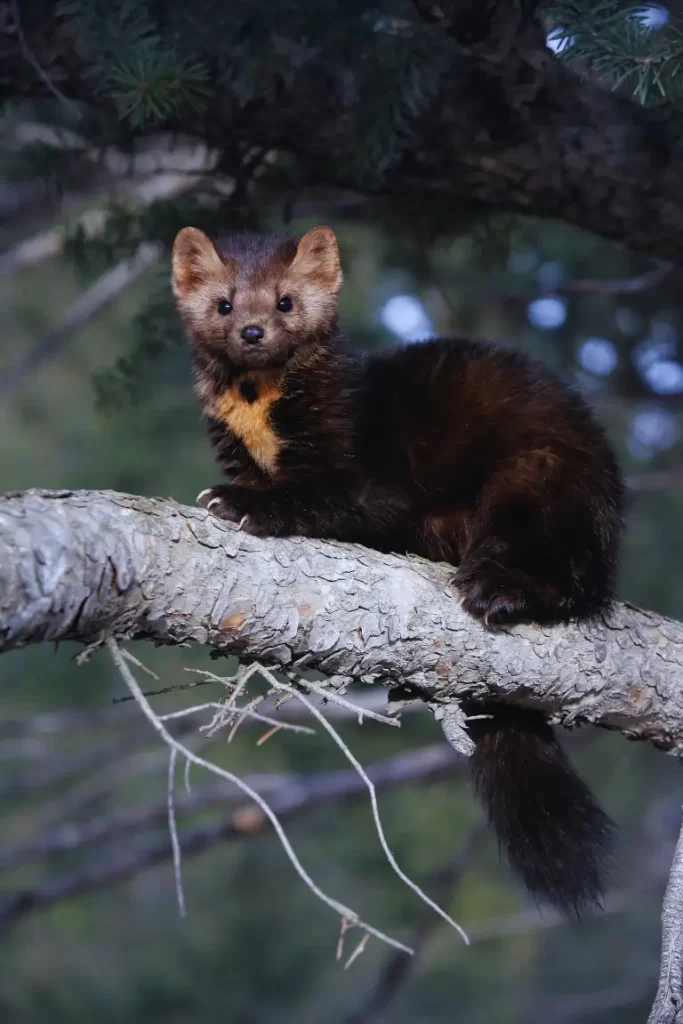
The American marten has a particular fondness for small mammals, which play a central role in their menu. They eagerly pursue a variety of creatures, including voles, mice, shrews, and squirrels. These agile predators rely on their stealth and agility to skillfully capture their prey.
In addition to small mammals like voles, mice, shrews, and squirrels, the American marten also incorporates a range of other food sources into its diet.
These resourceful hunters have been observed consuming birds and their eggs, insects, reptiles, and even carrion when necessary.
They showcase adaptability in their culinary choices, utilizing the available resources in their habitat to meet their nutritional needs. This versatility allows the American marten to sustain itself in various environments and ensures its survival as an opportunistic carnivore.
Species of mammals that are preyed by American pine martens
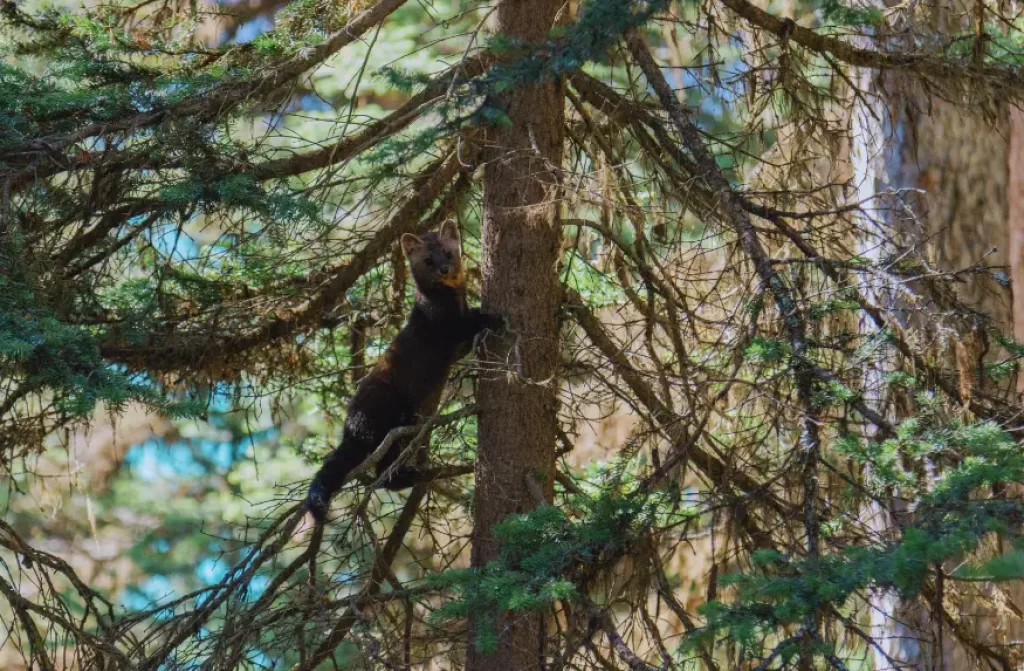
Voles (Microtus spp.)
Voles are small, burrowing rodents commonly preyed upon by American pine martens. They belong to the family Cricetidae and are known for their short tails and small ears.
Voles are herbivorous, feeding on various plants, seeds, and grasses. They play an essential role in the ecosystem as a food source for predators like the pine martens.
Mice (Mus spp.)
Mice are another common prey for American pine martens. These tiny rodents belong to the family Muridae and are known for their rapid reproduction and adaptability to various habitats.
Mice have a diverse diet, consisting of seeds, fruits, insects, and even small vertebrates. They are essential forest ecosystem components and are a vital food source for many predators.
Shrews (Soricidae)
Shrews are small, insectivorous mammals preyed upon by American pine martens. They belong to the family Soricidae and are known for their high metabolic rates and voracious appetites.
Shrews have elongated snouts and sharp teeth, which they use to capture and consume insects, worms, and other small invertebrates. They are active hunters and play a crucial role in controlling insect populations in their habitat.
Squirrels (Sciurus spp.)
Squirrels are arboreal rodents that American pine martens occasionally target. They belong to the family Sciuridae and are known for their bushy tails and ability to climb trees. Squirrels have a diverse diet, including nuts, seeds, fruits, and tree bark.
They are highly agile and have developed strategies to avoid predators, but they can still fall victim to the hunting skills of pine martens.
Chipmunks (Tamias spp.)
Chipmunks are tiny, ground-dwelling rodents preyed upon by American pine martens. They belong to the family Sciuridae and are known for their striped patterns and cheek pouches for storing food. Chipmunks have a varied diet: seeds, nuts, berries, and insects.
They are highly active and often seen scurrying around for food or taking shelter in caves. Despite their quick movements and mysterious behavior, they can become targets for pine martens in their natural habitat.
Birds and Eggs
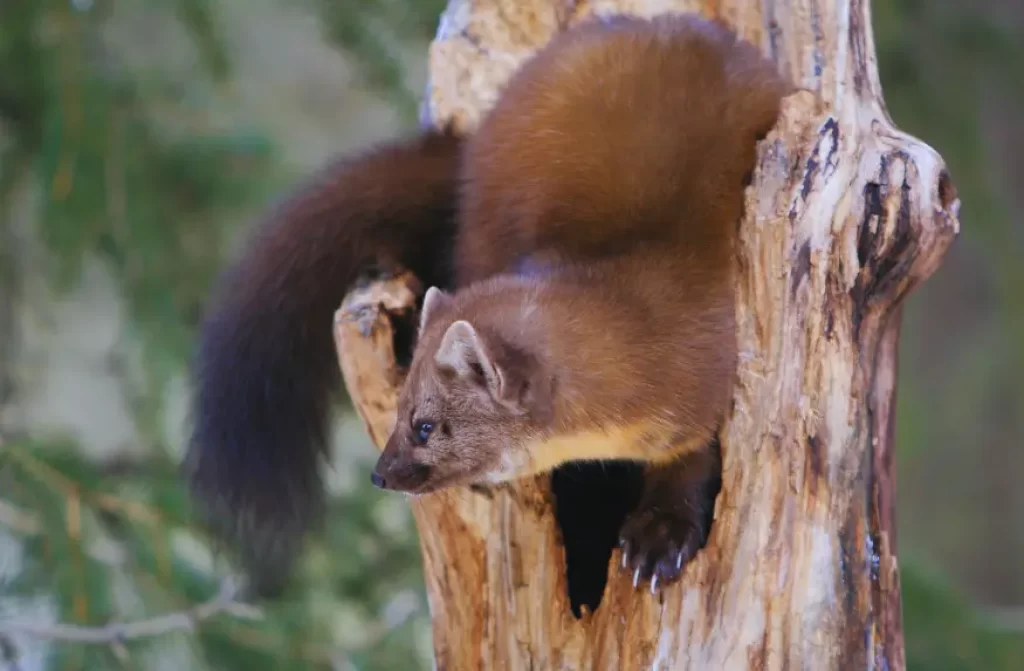
Birds and their eggs serve as an essential food source for American martens, although they primarily focus on small mammals.
During nesting seasons, martens take advantage of the vulnerability of bird nests, particularly those situated in trees. With their adept climbing skills, martens can access these nests and prey upon the eggs and sometimes even the nestlings. T
his opportunistic behavior allows them to supplement their diet with protein-rich bird eggs, expanding their culinary choices in their quest for sustenance.
Do American martens consume insects and other invertebrates?
Yes, American martens exhibit a versatile feeding behavior that includes the consumption of insects and other invertebrates.
They take advantage of the abundance of these creatures in their habitat, adding variety to their diet. Insects such as beetles, grasshoppers, and caterpillars are among the arthropods that martens may actively hunt and consume.
This adaptability allows them to adjust their feeding habits according to seasonal fluctuations and the availability of these tiny but nutritious prey. American martens demonstrate their ability to exploit diverse food sources within their ecosystem by including insects and invertebrates in their culinary choices.
Carrion
When the opportunity arises, American martens are not opposed to scavenging on carrion. Although they primarily rely on their hunting skills, they can occasionally capitalize on the carcasses of larger animals, ensuring their survival even during lean times.
This adaptability allows them to maximize available resources within their environment.
Plant Matter
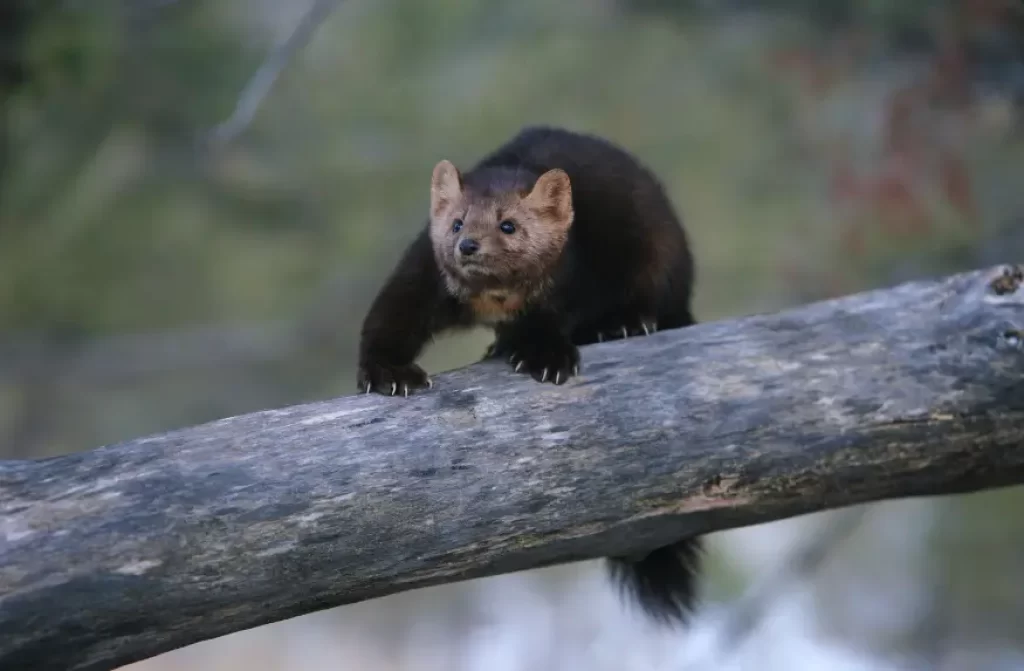
Although not a staple in their diet, American martens occasionally incorporate plant matter into their meals.
Fruits, nuts, and berries are among the plant materials observed in their consumption. While most of their nutrition comes from animal prey, these occasional forays into plant matter can provide supplementary vitamins and minerals, enhancing their overall adaptability.
This flexible dietary behavior showcases the Martens’ ability to capitalize on available food sources and adapt to different environments.
By incorporating plant material, they exhibit the versatility and the potential to meet their nutritional needs in varying circumstances. While their primary focus remains carnivorous pursuits, these plant additions offer a valuable dietary supplement for the resourceful American marten.
Frequently Asked Questions (FAQ)
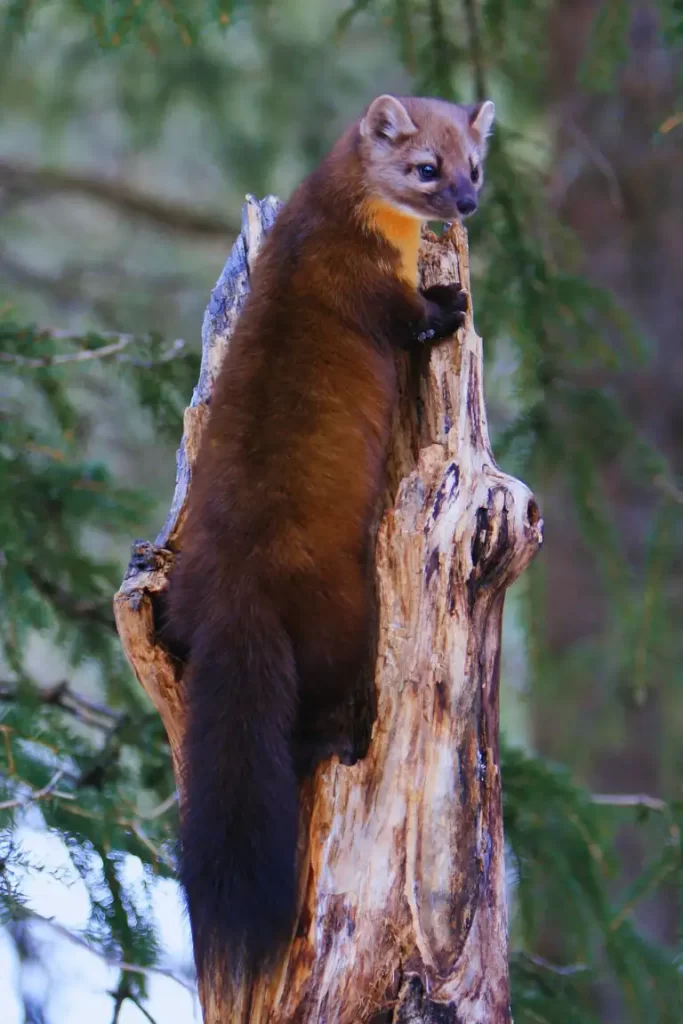
What types of animals comprise the core of the American marten’s diet?
Small mammals form the core of the American marten’s diet. They target creatures such as voles, mice, shrews, and squirrels.
How do American martens capture their prey?
American martens employ stealth and agility to capture their prey. With swift movements and calculated strikes, they overpower their quarry, ensuring a steady supply of protein-rich sustenance.
Why are small mammals essential to the American marten’s diet?
Small mammals provide the American marten with a rich source of nutrients and protein. They are crucial in sustaining the marten’s energy levels and overall health.
What hunting strategies do American martens use to capture small mammals?
American martens use their nimble bodies, sharp teeth, and semi-retractable claws to capture small mammals successfully. Their agility and hunting skills allow them to navigate their woodland habitats and make calculated strikes on their prey.
What is the significance of small mammals in the American marten’s ecosystem?
Small mammals serve as prey for the American marten, contributing to their ecosystem’s delicate balance of predator-prey relationships. The predation of small mammals by martens helps regulate their populations, ensuring the overall health and sustainability of the ecosystem.
Conclusion
The American marten is a skilled predator with a diverse menu that suits its hunting nature. It preys on small mammals, birds, insects, carrion, and even plants when necessary, showcasing its ability to adapt to available food sources within its habitat.
Through their intelligence and resourcefulness, American martens ensure their survival amidst the constantly changing landscapes of North America.
As we continue to study these fascinating creatures, further research into their feeding behaviors will enhance our understanding of their crucial role and contribution to maintaining the delicate balance of North America’s ecosystems.






